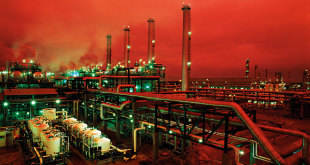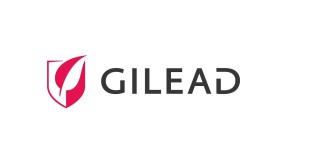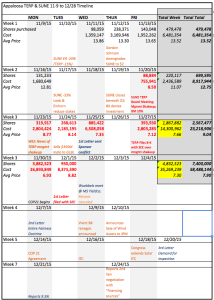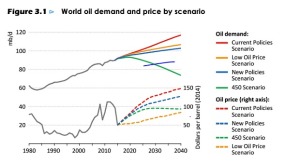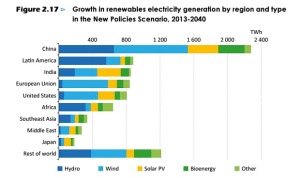China’s Economic Distress
The sugar rush from China’s most recent economic stimulus has begun to wear off as second-quarter growth is expected to slow to 6.6%, a seven year low (Update: Official GDP numbers showed 6.7% – led by construction & retail consumption.) Meanwhile, calls are growing louder to recapitalize banks and State-Owned Enterprises struggling under massive debt loads.
China has effectively abandoned Premier Li Keqiang’s pledge of last January to maintain currency stability: “The yuan will remain basically stable in weighted terms. China has no intention of stimulating exports through competitive currency devaluation.”
From the Telegraph:
The country’s currency basket has been sliding at an annual pace of 12pc since the start of the year. This has picked up sharply since the Brexit vote, suggesting that the People’s Bank (PBOC) may be taking advantage of the distraction to push through a sharper devaluation.
“This makes a mockery of the PBOC’s suggestion that its policy is to keep the currency’s value stable,” said Mark Williams, chief China economist at Capital Economics. “Markets will not take PBOC policy statements at face value in the future.
China is carrying out a systematic devaluation of the yuan –accelerated during the Brexit excitement– sending a powerful deflationary impulse through the global economy. Its attempt to export its problems though devaluation is a key reason why inflation expectations are crashing to record lows across the developed world.
This in turn is driving global bond yields to historic lows almost daily. From Bloomberg:
10-year borrowing costs are down to -0.58pc in Switzerland, -0.28pc in Japan, -0.16pc in Germany, 0.14pc in France, 0.78pc in Britain, and 1.4pc in the US.
Although China’s most recent currency reserve numbers showed a surprise increase — suggesting that capital is not fleeing the country at as rapid a pace as the last six months of 2015– overall reserves are in fact falling relative to M2. Speculation is rising as to whether China is actively intervening in markets, all of which, in the eyes of many China watchers, increases the probability of a disorderly RMB shock later this year.
The latest twist comes from the foreign reserves data, which suggest that China may have begun to intervene actively in the markets to drive down the yuan. This would have grave repercussions. Provisional figures imply that the PBOC purchased a net $34bn of foreign bonds in June, once valuation distortions are stripped out.
Mark Williams, chief China economist at Capital Economics, said it is too early to tell whether this was active buying. “If they are intervening it would set off a bomb in relation with the US, especially in the run-up to the US elections,” he said.
The White House has become neuralgic about the strength of the US dollar after a 20pc surge since mid-2014, one of the most dramatic spikes of the post-War era. US officials read the riot act at the G20 summit in Shanghai in February, warning Japan and Europe that use of negative interest rates as a stealth tool to drive down exchanges would not be tolerated.
Friction in the South China Sea
From the New York Times:
BEIJING — An international tribunal in The Hague delivered a sweeping rebuke on Tuesday of China’s behavior in the South China Sea, including its construction of artificial islands, and found that its expansive claim to sovereignty over the waters had no legal basis.
The landmark case, brought by the Philippines, was seen as an important crossroads in China’s rise as a global power and in its rivalry with the United States, and it could force Beijing to reconsider its assertive tactics in the region or risk being labeled an international outlaw. It was the first time the Chinese government had been summoned before the international justice system.
“It’s an overwhelming victory. We won on every significant point,” said the Philippines’ chief counsel in the case.
From The Interpreter:
The biggest test is that posed by the ruling for China. It is also the most difficult. Now, if China simply continues its present actions around features in the Philippine exclusive economic zone in the South China Sea and continues to insist on the validity of the 9-dash line, it will be unambiguously undertaking unlawful activities. This will deepen the already profound distrust and fear of China in the region and contribute to China’s self-isolation in maritime East Asia. As President Xi notes, big powers are different to smaller ones.
While the decision is legally binding, no enforcement mechanism exists. China flatly refused to participate in the legal proceedings and reiterated again today that it would not abide by the international court’s decision.
Speaking at a meeting with European leaders, President Xi Jinping was defiant, reasserting China’s claim to sovereignty over the South China Sea “since ancient times,” the state-run People’s Daily reported. His remarks echoed a statement from the Foreign Ministry. The tribunal’s decision “is invalid and has no binding force,” the ministry said. “China does not accept or recognize it.”
Although this outcome was expected, the five judges and legal experts on the tribunal ruled unanimously, and the decision was so heavily in favor of the Philippines that there are fears about how the Chinese leadership will react.
“Xi Jinping has lost face here, and it will be difficult for China to do nothing,” said Bonnie S. Glaser, a senior adviser for Asia at the Center for Strategic and International Studies in Washington. “I expect a very tough reaction from China, since it has lost on almost every point. There is virtually nothing that it has won.”
The issue could have ramifications for domestic politics in China. Mr. Xi has made defense of maritime claims a central part of the governing Communist Party’s narrative that it has restored the nation to global greatness after long periods of humiliation by bigger powers. Any challenge to that narrative is seen in Beijing as a challenge to the party’s rule.
This challenge could add pressure to a government already feeling the heat of a weakening –if not imploding (if one dares question official economic statistics)– domestic economy, structurally impaired from over $30 Trillion in total debt. The prime directive of the CPC is to remain in power, ergo, maintain domestic stability at all costs — which includes redirecting domestic attentions and channeling nationalistic furvor when necessary. Yet, ultimately these are destabilizing triggers, and the probability of a misstep is very high from a party still stinging from its incompetent handling of self-induced financial crises earlier this year and last.
“Asian Arms Race” & Growing Risk of Confrontation
China’s PR machine had been in high gear leading up to The Hague announcement. Last week state media said the country “must be prepared for any military confrontation” with the US, and “must not flinch from war if provoked.”
From the Telegraph:
It (The Hague decision) is the latest in a series ominous developments in Asia and Europe that are rapidly subverting the Western international system and setting off a global rearmament race with strong echoes of the late-1930s.
Tensions are flaring up across so many spots in East Asia that global investment funds are actively betting on defence stocks and technology companies linked to military expansion. Nomura has launched an “Asian Arms Race Basket” as a hedge against potential conflicts in the East China Sea, the Straits of Taiwan, and the South China Sea. Among the companies listed are Mitsubishi Heavy Industry and Sumitomo Precision in Japan, China Shipbuilding and AVIC Aircraft in China, Korea Aerospace and the explosives group Hanwha, as well as Reliance Defence and Bharat Electronics in India.
The Stockholm International Peace Research Institute says China spent $215bn on defence last year, a fivefold increase since 2000, and more than the whole of the European Union combined. It is developing indigenous aircraft carriers. US experts say its “Two-Ocean Strategy” implies a fleet of five or six aircraft carrier battle groups to project global power.
Japan has upgraded its once invisible Self-Defence Force to a full-fledged fighting machine with a humming new headquarters and an air of determined alertness. The country has been increasing military spending for the last four years, especially under its nationalist leader Shinzo Abe, commissioning its largest warship since the Second World War, an 800-ft DDH-class helicopter carrier.
Flash points are now legion. China’s dispute with Japan over the control of the Diaoyu/Senkaku islands in the East China Sea continues to erupt in spasms, with alarmingly close brushes by air and sea. There is still no hotline mechanism in place to stop skirmishes spinning out of control.
But the South China Sea is where matters are coming to a head. The Pentagon has made it clear that any move by Beijing to weaponize the Scarborough Shoal off the Philippines would be a step too far, leading to military response.
Possibility of Contagion
From The Telegraph:
The great worry is that parallel dramas in East Asia and in Europe could feed on each other. Washington’s ‘Asian Pivot’ is diverting US focus and power from Nato to the Far East, creating an opening for Russia’s Vladimir Putin.
Mr Putin’s arms build-up has equipped him with a formidable military machine just at the moment when the EU has been slashing spending on modern weaponry. He has a window of opportunity to press his advantage, perhaps by testing Nato solidarity in the Baltics with his hallmark form of hybrid warfare.
“I am convinced that Europe stands on the edge of several strategic and political precipices and could well see more change in the next five years than in the preceding fifty,” says Julian Lindley-French, vice-president of the Atlantic Treaty Association.
This is, granted, a lot to unpack.
The main question is how will the CPC respond within the South China Sea, post-decision? Particularly given that if it proceeds as it has historically, it will “unambiguously be undertaking illegal and unlawful activities”, thereby theoretically ratcheting tensions within an already high-pressure, re-armed region. Will the CPC use this as an opportunity to redirect from economic issues at home?
What then would President Obama –or President-elect Clinton or Trump– do, should one or more conflicts break out within Asia-Pacific?
Will Putin then take advantage in Europe? It’s almost certain he will. If so, would America still be able to fulfill its European obligations and come to the defense of its NATO partners? (Simultaneously conducting operations against two nuclear-armed adversaries, one of whom is the world’s second largest economy, representing nearly 60% of global growth?)
Nobody knows the answer.
The world has seldom, if ever, been in quite this situation.
Comments »

